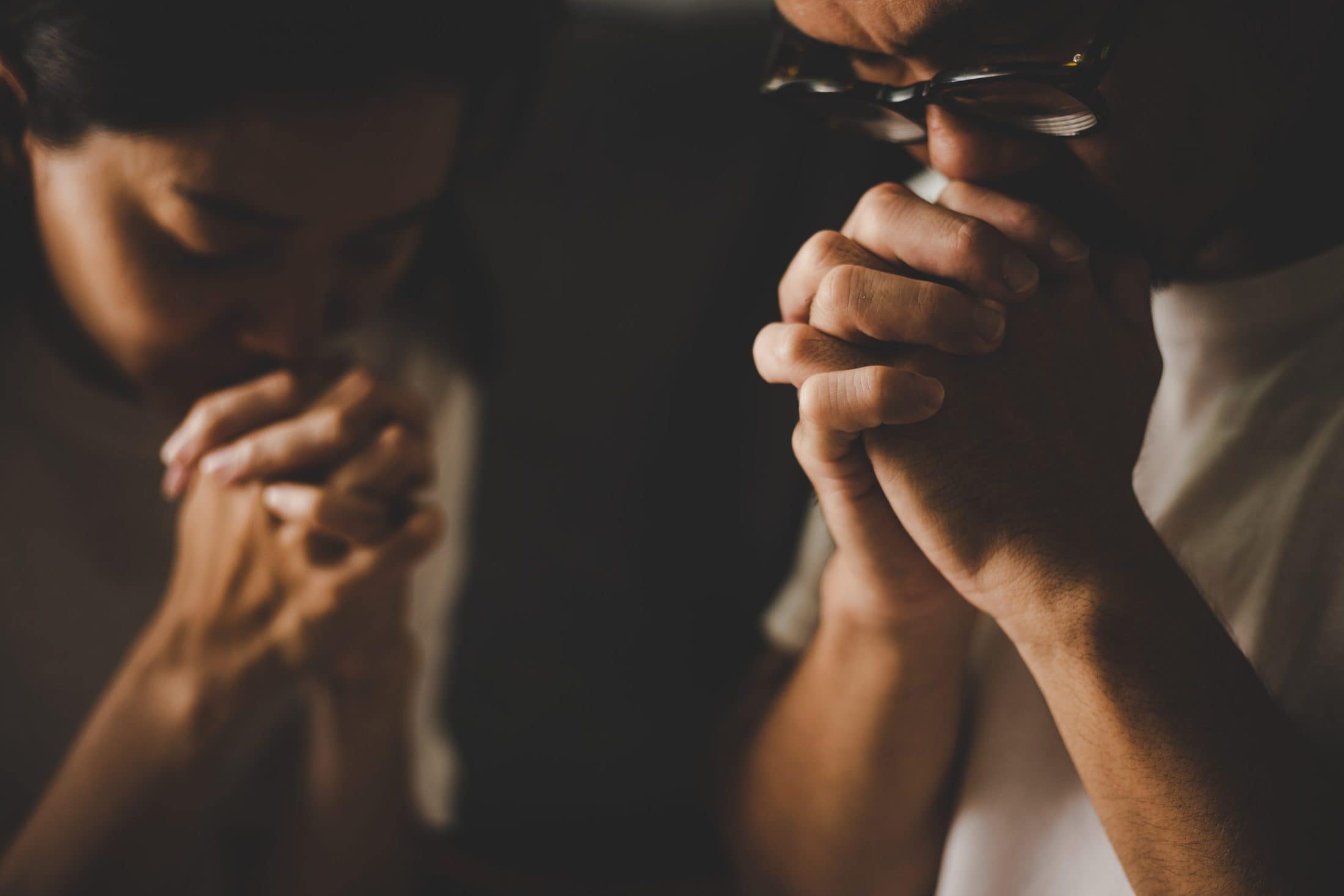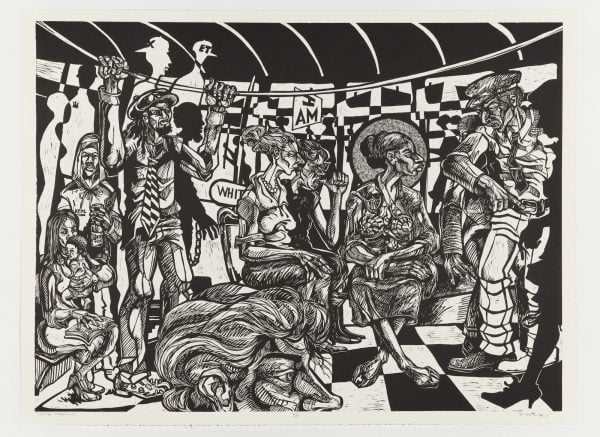This Black History Month, we have licensed four of artist Steve A. Prince’s social justice artworks to feature. We will post one artwork each Sunday, with questions and prompts for you to do Visio Divina, or “sacred seeing,” an ancient form of Christian prayer in which we allow our hearts and imaginations to enter into the image to see what God might have to say to us.

Meditate + Reflect
“Rosa Sparks,” Linoleum Cut on Paper, 36” x 50” 2017
Description from Steve:
The image “Rosa Sparks” commemorates Rosa Parks who refused to give up her seat on a Montgomery, Alabama bus in 1955. Parks’ bravery was the “spark” for the bus boycott of that same year.
The image encapsulates the pivotal moment when the bus driver tried to get Parks to give up her seat to a White passenger. Paul, in his Epistle (letter) to the Ephesians, postulates that we must put on the “Whole Armor of God,” because we battle not against flesh and blood but against principalities and things in high places. Parks is adorned with a breastplate of righteousness, a shield with the letters “AOG” (Armor of God), her feet are shod with readiness, and her head is crowned with a spiritual halo signifying the helmet of salvation.
Parks’ posture is in opposition to the driver, and she will not be moved. Her legs and arms are crossed, and her cold glare represents her defiance. Masses of Black people mobilized under the leadership of Martin Luther King, Jr., by picketing, carpooling, walking, and riding bikes for over a year, causing the local government to relent and integrate the buses.
In the shadows, the letters “ET,” conspicuously attached to a ghost-like figure, represent Emmitt Till, a 14-year old boy who was murdered in Money, Mississippi earlier in 1955 for supposed “reckless eyeballing.” An “X” for Malcolm, and a “crown” for King allude to the two leaders who were assassinated in 1965 and 1968 respectively, fighting for the cause. A Black man with his hands upraised represents Michael Brown, “Hands Up, Don’t Shoot!” and next to him a young Black male with a “hoodie” and a can of Arizona tea represents Trayvon Martin. The letters “K-o-o-l” adorn Trayvon’s hoodie, and symbolizes Eric Garner who uttered “I Can’t Breathe!” Sadly, ironically, they are the same words that George Floyd said before his death under the knee of the police officer.
A mother and child sit uttering peace in the midst of the hate-storm. The two are sacred figures, but I removed the halos that would traditionally adorn the head of Mary and Christ. I wanted to create figures that represented the everyday Deities that I believe we all represent. Each one of our lives, regardless of race, ethnicity, or class, are sacred and beautiful. The woman holds a Bible open to Matthew 5:3–10, which becomes our urban credo: “Blessed are the peacemakers, for they shall be called children of God…” We must continue the march for equality, and know that we will be protected!
Visio Divina Prompts
• Consider your first impressions. As you take in the image, notice your breath and your body. Allow your eyes to stay with the very first thing that catches your eye. Ask the Spirit to speak to you through what you’ve noticed, and leave room to listen. Slow your breathing and gently bring your attention back when it strays. What thoughts come to mind as you consider where your eye first lands? What emotions surface?
• Pay attention to your thoughts and feelings. Let yourself begin to take in the picture as a whole, considering other parts of the image that catch your attention. How does the entire image make you feel? What questions does it provoke, or what memories does it stir up? If you were in the image, where would you place yourself?
• Look for God. Has anything in the painting become sacred for you? Is there a name for God, Jesus, or the Spirit that arises for you? In silence, sit with what you have received. It may be tempting to rush through the steps, but remember we are practicing keeping company with Jesus. Talk with God about what comes up for you.
• Return. If possible, return to the image throughout the day. This is an opportunity to continue to ponder and listen for God in an ongoing way.
Visio Divina prompts created by and used with permission of Vanessa Sadler and the Center for Formation, Justice and Peace. |


